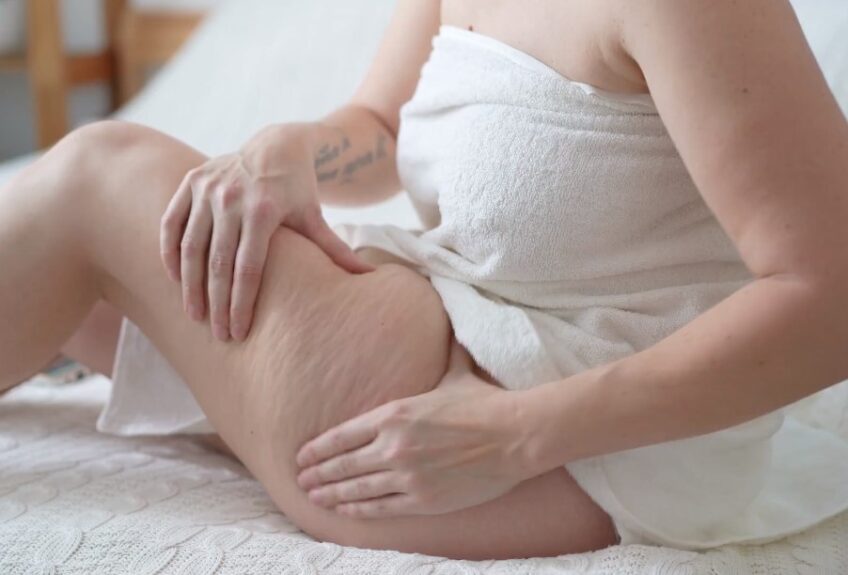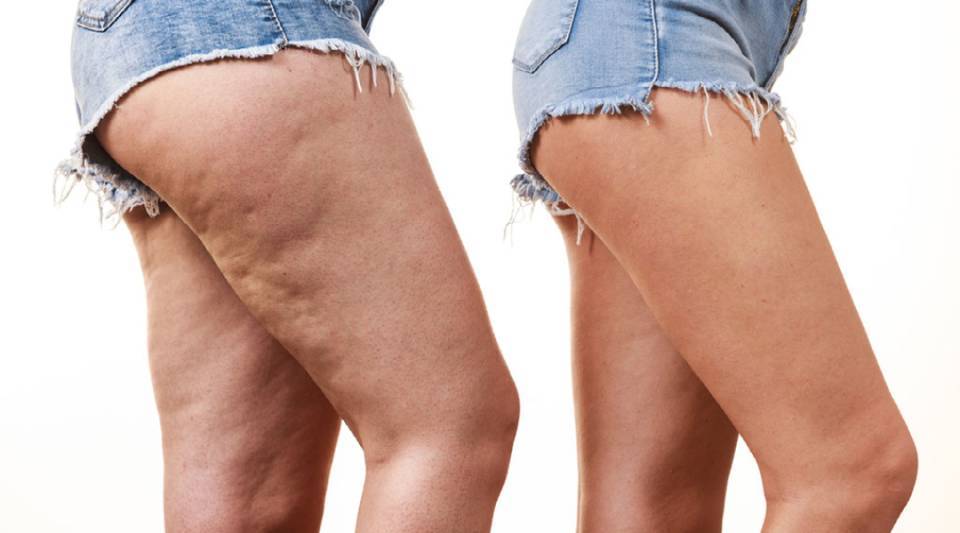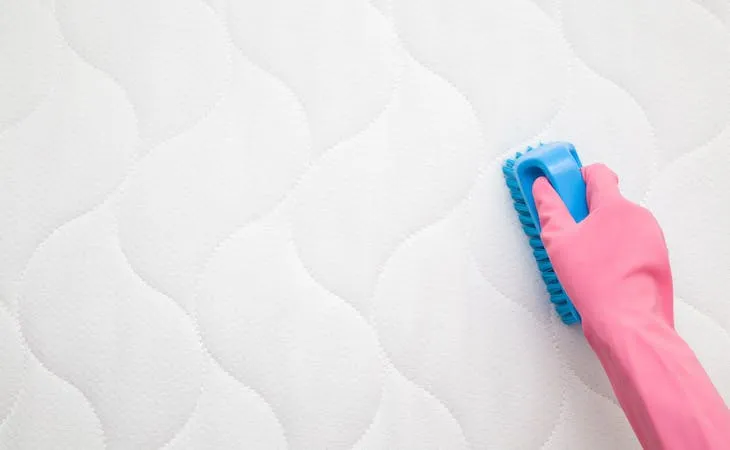Occasionally, images of famous individuals with lipedema have appeared online, leading to discussions about their uneven body proportions. The actual cause of this fat accumulation in the arms and thighs is a tissue disorder known as lipedema. Regrettably, many celebrities do not become aware of their lipedema diagnosis until they suffer from chronic symptoms like pain.
Lipedema is a common condition among women, and its causes include high estrogen levels, an unbalanced diet, genetic factors, pregnancy, or hormonal imbalances.
Celebrities in their late 30s often display symptoms such as softened and dimpled skin on their thighs, squishy and swollen leg tissues, increased sensitivity, cold legs, pain, and a tendency to bruise easily.
These signs all indicate the presence of lipedema, a disorder that can progress to lymphedema.
In recent years, some celebrities with lipedema have openly discussed their experiences with the condition and their paths to recovery. However, other celebrities remain unaware of their condition, as it can be challenging to diagnose in its early stages. In the following text, we will discuss lipedema and the celebrities who suffer from it.
Page Contents
- 1 What is Lipedema?
- 2 How Prevalent it is?
- 3 Is it Lipedema or Just Cellulite?
- 4 Does It Go Away with Weight Loss?
- 5 Can Lipedema Develop into Lymphedema?
- 6 What are the Early Signs of Lipedema?
- 7 What Hormone Causes It?
- 8 Celebrities with Lipedema
- 9 How To Break Down Lipedema Fat And Keep It From Progressing?
- 10 What Foods To Avoid
- 11 Liposuction And Celebrities Who Went Under Knife
- 12 Does Massage Help?
- 13 In Conclusion
What is Lipedema?

Lipedema is a chronic medical condition characterized by an abnormal buildup of fat in specific areas of the body, primarily the legs and arms. It is also known as adiposis dolorosa due to the associated fat accumulation. This tissue disorder can cause significant pain and interfere with everyday activities. Lipedema initially presents with swelling and skin softening, making it more prone to bruising. Over time, it may lead to the development of varicose veins. The symptoms can limit mobility and cause discomfort in daily life.
How Prevalent it is?
Lipedema affects women globally, with studies indicating that around 11% of adult women worldwide are diagnosed with the condition. Factors such as medical history, genetics, diet, and lifestyle may contribute to the development of the disease.
Is it Lipedema or Just Cellulite?

Accurate and timely diagnosis of lipedema is essential for starting appropriate treatment. Both lipedema and cellulite can cause the skin to appear soft, dimpled, and uneven, leading to confusion between the two conditions.
However, they are distinct entities. Cellulite is a cosmetic issue that does not cause harm, whereas lipedema is a serious tissue disorder.
To determine if you have cellulite or lipedema, it’s essential to understand the different symptoms associated with each condition. While both may appear similar at first, cellulite results in dimpling, swelling, and a bumpy appearance of the skin without causing actual swelling. In contrast, lipedema leads to swelling along with other symptoms such as swollen arms and legs, increased susceptibility to bruising, limited mobility, and chronic pain.
Does It Go Away with Weight Loss?
Lipedema does not disappear with weight loss alone. However, weight management is essential during Lipedema treatment and can help slow the progression of the disease. While weight loss alone is not sufficient to treat the condition, it can be beneficial when combined with liposuction or compression therapy.
Can Lipedema Develop into Lymphedema?
;Lymphedema can occur as a secondary condition to Lipedema. They are two separate disorders: Lipedema involves the buildup of fat in the body tissues of the arms and legs, while Lymphedema is the accumulation of lymphatic fluid in the extremities due to blockage or impaired lymph vessels and the lymphatic system’s functioning.
The two conditions can be related when Lipedema progresses to Lymphedema. As fat deposits increase in body tissues, they can compress delicate lymphatic vessels, causing obstructions. This leads to the accumulation of lymphatic fluids in the arms and legs. So, while Lymphedema and Lipedema are not the same, the latter can lead to the former.
What are the Early Signs of Lipedema?
In the early stages of Lipedema, or before diagnosis, there are certain signs to watch for if you suspect this severe tissue disorder. Initially, the legs may feel spongy and swollen, and the skin may be cold and exceptionally soft. A columnar appearance of muscles and tissues from the hips to the ankles is noticeable. Additionally, the muscles may be lumpy, and the tissue may feel knotted when gently pressed. Easy bruising of the skin may also be a symptom.
What Hormone Causes It?
Estrogen, a hormone linked to Lipedema, plays a crucial role in regulating adipocyte metabolism, glucose metabolism, and fat distribution. Since estrogen is a female hormone, Lipedema is more common in women than men. Estrogen controls the increase of fat cells in the body, and excess, unutilized fat deposits in the thighs and legs can lead to an abnormal accumulation of fat in the extremities. This frequent deposition results in Lipedema.
Celebrities with Lipedema

Have you noticed that some well-known celebrities have started gaining extra weight around their hips and thighs? They may be experiencing symptoms of Lipedema. This tissue disorder often begins after the age of 30, and many celebrities can develop the condition despite maintaining a healthy diet and exercise routine. The cause may be their genetic makeup and sudden hormonal changes, pregnancies, and other factors that affect fat metabolism.
Numerous beloved celebrities are either suspected of having Lipedema or have been diagnosed with the condition. Here is a list of those celebrities with Lipedema:
Mischa Barton
Mischa Barton, a renowned television, film, and stage actress, has recently had pictures of her in shorts circulating on the internet. People were concerned about her sudden change in physique, particularly her legs. Her legs appeared thicker and dimpled. Although some suggested she might have cellulite, her sudden weight gain around her thighs and hips and the columnar appearance of her muscles indicate she may have Lipedema.
Shaughna Phillips
Shaughna Phillips, who appeared on Love Island Season 6, confirmed her Lipedema diagnosis. She noticed unusual fat accumulation around her calves and thighs and underwent liposuction therapy following her diagnosis. Shaughna has since recovered and shared her experiences with lipedema fat removal surgery.
Kirstie Alley
Kirstie Alley has discussed her struggles with weight, and her symptoms and leg appearance suggests she may have Lipedema. The disproportionate appearance of her legs compared to the rest of her body could be a sign of the condition.
Rebel Wilson
Rebel Wilson, a talented actress, is reported to have Lipedema. However, simply being overweight does not confirm the diagnosis. Lipedema is a condition that many medical professionals often overlook.
Alicia Keys
Alicia Keys, a songwriter and performer, has always flaunted her strong legs. However, the disproportionate appearance of her legs compared to the rest of her body suggests she may have Lipedema.
Kylie Jenner
Kylie Jenner, a well-known celebrity, has a noticeable scar on her leg that may indicate liposuction. She has always been open about her health and may have experienced Lipedema. Kylie has undergone numerous cosmetic surgeries, including liposuction, to improve her appearance.
Wendy Williams
Wendy Williams was diagnosed with Lipedema, which progressed to Lymphedema. She has spoken about her condition, saying, “I can only feel 5% of my feet due to lymphedema.” Wendy uses home massage devices to alleviate pain and symptoms.
How To Break Down Lipedema Fat And Keep It From Progressing?
To break down lipedema fat and prevent the condition from progressing, it is crucial to incorporate a combination of lifestyle changes, medical treatments, and ongoing management strategies. Here are some steps you can take to address lipedema fat and minimize its progression:
Maintain a healthy diet
Adopt a balanced, anti-inflammatory diet rich in fruits, vegetables, lean proteins, and healthy fats. Reducing processed foods, sugar, and salt can help manage inflammation and weight, which can contribute to lipedema progression.
Exercise regularly
Engage in low-impact exercises such as swimming, walking, cycling, or yoga to improve blood flow, maintain joint flexibility, and support overall health. Regular exercise can also help with weight management, which is essential in preventing lipedema from worsening.
Compression therapy
Wearing compression garments can improve circulation and reduce swelling in the affected limbs. Consult your healthcare provider for appropriate compression garments and proper usage guidelines.
Manual lymphatic drainage (MLD)
This specialized massage technique encourages the natural drainage of lymphatic fluid, helping to alleviate swelling and discomfort. A certified lymphedema therapist can perform MLD as part of your ongoing lipedema management plan.
Liposuction:
In some cases, liposuction may be recommended to remove lipedema fat, particularly if conservative treatments have not provided adequate relief. It’s important to consult with a healthcare professional experienced in treating lipedema to determine if liposuction is an appropriate option for you.
Maintain a healthy weight
While weight loss alone cannot cure lipedema, maintaining a healthy weight can help slow its progression and alleviate some symptoms. Work with a healthcare professional or nutritionist to develop a personalized weight management plan.
Manage stress
Chronic stress can exacerbate lipedema symptoms and contribute to inflammation. Incorporate stress reduction techniques such as meditation, deep breathing exercises, or mindfulness practices into your daily routine.
Stay proactive with healthcare
Regularly consult with healthcare professionals experienced in lipedema management to monitor your condition, adjust treatment plans as needed, and promptly address any changes in your symptoms.
By implementing these strategies, you can help break down lipedema fat, manage symptoms, and prevent the condition from progressing. It is essential to work closely with your healthcare provider to develop a personalized treatment plan tailored to your specific needs and circumstances.
What Foods To Avoid

Here are some foods to avoid or limit in your diet:
- Processed foods: Avoid packaged and processed foods high in unhealthy fats, sugar, and salt, as they can contribute to inflammation and weight gain.
- Refined carbohydrates: Limit your intake of white bread, pasta, and rice. Instead, opt for whole grains like quinoa, brown rice, and whole wheat bread, which are more nutritious and can help regulate blood sugar levels.
- Sugary foods and beverages: Cut back on sugar-laden foods and drinks such as candies, pastries, soda, and fruit juices, as they can lead to weight gain and exacerbate inflammation.
- Fried and fatty foods: Reduce your consumption of fried foods, fast food, and high-fat snacks, as they can contribute to inflammation and weight gain.
- Excessive caffeine: Limit your caffeine intake, as excessive amounts can negatively affect your lymphatic system and exacerbate lipedema symptoms.
- Alcohol: Minimize alcohol consumption, as it can contribute to inflammation and impair your body’s ability to eliminate toxins.
- Red and processed meats: Reduce your intake of red and processed meats, which can promote inflammation. Instead, choose lean protein sources such as poultry, fish, beans, and legumes.
- Artificial additives and preservatives: Avoid foods containing artificial additives, colorings, and preservatives, as they can contribute to inflammation.
- Dairy products: Some individuals with lipedema may be sensitive to dairy products. If you suspect dairy may be worsening your symptoms, consider reducing your intake or trying dairy alternatives like almond milk, soy milk, or lactose-free products.
- Foods high in sodium: Excess sodium can contribute to water retention and swelling. Limit high-sodium foods like canned soups, processed meats, and snack foods, and choose low-sodium alternatives when possible.
It’s essential to focus on a diet rich in fruits, vegetables, lean proteins, whole grains, and healthy fats. By avoiding or limiting the foods mentioned above and working with a healthcare professional or nutritionist, you can develop a personalized diet plan to help manage lipedema symptoms and support overall health.
Liposuction And Celebrities Who Went Under Knife

Liposuction is a widely-used cosmetic procedure that employs a high-pressure suction technique to eliminate excess fat from targeted areas of the body. Celebrities commonly resort to liposuction for body contouring or addressing troublesome regions. Specifically, celebrities diagnosed with lipedema have often chosen liposuction to mitigate the effects of the condition. The following is a list of some celebrities with lipedema who have undergone liposuction therapy:
Shaughna Phillips
Diagnosed with lipedema, Shaughna Phillips underwent liposuction to address the issue. Although she found the procedure painful, it helped her sculpt calves and remove excessive fat.
Amy Schumer
Amy Schumer also opted for liposuction after being diagnosed with lipedema. She openly discussed her experience, stating, “I feel good.”
Kylie Jenner
A scar on Kylie Jenner’s leg suggests that she might have undergone liposuction surgery to remove excess fat caused by lipedema. Kylie has also revealed that she has had a Brazilian butt lift, body sculpting, and reconstructive surgery.
Mariah Carey
Mariah Carey chose liposuction after being diagnosed with lipedema. She appears to be content with the outcome, as seen in recent photos where she confidently showcases her legs.
Does Massage Help?
Yes, massage can help with lipedema. Manual Lymphatic Drainage (MLD), a specialized form of massage, is often used as part of the treatment plan for lipedema. MLD is a gentle massage technique that focuses on stimulating the lymphatic system, helping to reduce swelling and improve the flow of lymphatic fluid.
The massage technique can help alleviate some of the symptoms associated with lipedema, such as pain, heaviness, and discomfort. It may also promote the removal of excess fluid from the affected areas and support overall lymphatic system health.
However, it’s important to note that massage alone will not cure lipedema. It should be combined with other treatment approaches like compression therapy, exercise, and maintaining a balanced diet. Additionally, it’s crucial to consult a certified lymphedema therapist or healthcare professional experienced in MLD to ensure the massage is performed correctly and safely.
While exploring the topic of celebrities managing lipedema, it’s crucial to examine effective strategies for reducing the distinctive abdominal appearance associated with certain health conditions.
FAQ
Q: How is lipedema diagnosed?
A: Lipedema is typically diagnosed through a physical examination and a comprehensive review of the patient’s medical history. A healthcare professional will look for characteristic signs such as abnormal fat distribution, swelling, and pain in the affected limbs. In some cases, imaging studies like ultrasound or MRI may be used to assess the tissue structure and rule out other potential causes of swelling.
Q: Are there different stages of lipedema?
A: Yes, lipedema progresses through three stages. Stage 1 is characterized by smooth skin with an even layer of fat beneath the skin. Stage 2 involves larger fat deposits, which cause the skin to appear uneven and lumpy. In Stage 3, large extrusions of fat tissue can form, leading to significant deformity and mobility issues. Early diagnosis and intervention can help slow the progression of lipedema.
Q: Is it related to obesity?
A: Although lipedema is not directly caused by obesity, being overweight can exacerbate the symptoms and progression of the condition. Obesity can contribute to additional strain on the lymphatic system and increase the risk of secondary lymphedema. Weight management is an essential aspect of lipedema treatment, but it’s important to remember that lipedema fat is resistant to diet and exercise.
Q: Can lipedema be prevented?
A: There is no known way to prevent lipedema, as its exact cause is still not fully understood. However, maintaining a healthy lifestyle with regular exercise, a balanced diet, and weight management can help minimize the risk of developing lipedema or worsening the condition.
Q: Are there any support groups for individuals with lipedema?
A: Yes, there are support groups and online communities for individuals with lipedema. These groups provide a platform for patients to share their experiences, learn about new treatments and coping strategies, and offer emotional support. Connecting with others who understand the unique challenges of living with lipedema can be invaluable in managing the condition.
Q: Can men develop lipedema?
A: While lipedema predominantly affects women, it is possible for men to develop the condition, though it is extremely rare. Hormonal factors, such as estrogen, are thought to play a role in the development of lipedema, which might explain the higher prevalence among women. If a man suspects he has lipedema, it’s essential to consult a healthcare professional for evaluation and diagnosis.
In Conclusion
A tissue condition called lipedema causes excessive fat to build up in the arms and legs. It is difficult to treat and can only be done so completely by surgery. However, this medical ailment has affected a lot of well-known and adored celebrities. Massage and compression therapy, however, can aid with lipedema symptoms. Misdiagnosis of lipedema is common. As a result, a lot of famous people with lipedema self-diagnosed it or had their doctors suspect it.
Theodore is a prolific author at Fischer Institute, known for his insightful articles on health and nutrition. His expertise spans a wide range of topics, from the benefits of traditional foods to the latest in health trends, always aiming to educate and empower readers towards better wellbeing.















